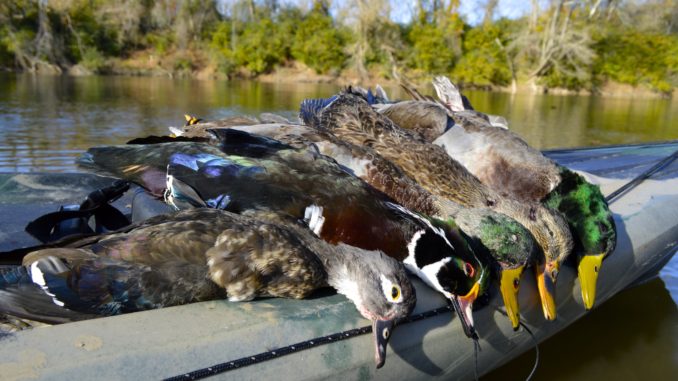
More cold weather up north should fill in Tarheel State’s marshes, impoundments
Temperatures are high and expectations are low as the third segment of North Carolina’s three-part waterfowl season gets underway. Hunters and biologists are expecting low numbers of birds as the migration continues to stall in regions far to the north.
“As far as the reports that I’ve gotten, they’re kind of sporadic,” said Doug Howell, the chief waterfowl biologist for the N.C. Wildlife Resources Commission. “I just talked to our area manager down around the Goose Creek area that handles Campbell’s Creek and Pamlico Point impoundments. We’re not seeing much there —just a few birds.”
Other public land opportunities are a little better, and some are as expected.
“Up here on the northern coast, J. Morgan Futch has got a good number of birds on it,”Howell said. “I would say for the Piedmont and the mountain regions, the migration is fairly normal for this time of year. Locally, there’s a good many birds and in other places, we don’t have anything.”
Migration reports like Ducks Unlimited’s waterfowl migration map show a lot of action around the Baltimore/Philadelphia area. The numbers seem to dwindle moving south.
“I talked to people in Maryland who said they had decent numbers of birds up there,”Howell said. “I talked to people in northern Virginia who said they really didn’t have a lot of birds. I’ve talked to people in southern Virginia who said they didn’t have a lot of birds, and then when you get down here to our coast, it’s kind of sporadic.”
It appears that North Carolina is in a migration dead zone. To the north, late-season migrators are waiting for the next cold front to push them south. To the south, South Carolina hunters are enjoying the birds that left North Carolina for warmer weather.
Ducks Unlimited’s migration alert for the Atlantic Flyway points to unbelievable numbers of ducks for a typical December.
“In an average season, the greatest concentrations of wintering ducks don’t arrive in South Carolina until January. However, a perfectly timed cold front is fueling one of the duckiest Decembers in memory in the Palmetto State,” said Kyle Wintersteen, the WF360 Atlantic Flyway migration editor.
For now, all that hunters in North Carolina can do is stay glued to weather reports, wait for better numbers, and hunt on.



Be the first to comment